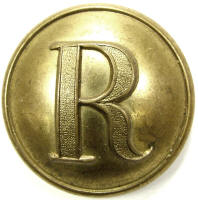
|
The Civil War Relicman, |
|
Winchester, Virginia
USA (changed hands 70 times in the Civil War!). |
|
|
relicman.com. |
Ridgeway Reference Archive, Civil War relics.
Horse equipment, bridle
bits & rossettes.

|
The Civil War Relicman, |
|
Winchester, Virginia
USA (changed hands 70 times in the Civil War!). |
|
|
relicman.com. |
Ridgeway Reference Archive, Civil War relics.
Horse equipment, bridle
bits & rossettes.
This is the "Ridgeway Reference Archive", a research tool for educational
purposes only, and is provided at no cost to the reader. Some of the
relics listed are retained in the author's collection, most reside in other
collections and are not owned by the author. None of the items listed in
this section are for sale, please refer to relicman.com sales listings for items
offered for sale. This is a work in progress, I list items as I get to
them, there are many patterns that are not listed yet, this list will be
regularly updated as I get pictures and descriptions for more items. I
will also correct mistakes, so if you see any please tell me.
All items listed are
believed to be original and authentic
to the Civil War or as otherwise described.
Any excavated relics have been recovered from private property with owners
permission.
Any artillery or ordnance relics have been
disarmed and rendered safe.
Any weapons are pre 1898 antique weapons,
and are exempt from Federal regulation, no licenses or permits are required.
This information is
available for research purposes, pictures may be used by permission only.
Bridle bit, Regulation
1859, US bosses with plain tabs and period.
Bridle bit was authorized under the Regulation 1859, large numbers were used in
the 1864 cavalry campaigns. Bit is made of iron parts fitted together and
is very durable, and fit in the horses mouth to control its motions. The
"U" shape on the upper bar was intended to apply pressure to the horses mouth,
the higher form was somewhat harsh on the horse and was used for training, this
pattern is the medium size and is the most common size used. The thin bar
at the bottom was used to hold the shape of the bit, sometimes this would be
removed to improve the fit for a particular horse. Brass US bosses were
attached to the sides with rivets, these had a tendency to eventually work
loose, many are found separated from the bits.
Ref: Crouch Horse Equipment, pg. 90, not
illustrated.
Boss from Regulation 1859
bridle bit, US with period, plain tabs.
Boss was sand cast and attached to the regulation 1859 bridle bit with rivets,
which had a tendency to work loose. This pattern depicts "U.S", the tabs
are plain.
Ref: Crouch Horse Equipment, pg. 112, item 8.
Boss from Regulation 1859
bridle bit, US without period, plain tabs.
Boss was sand cast and attached to the regulation 1859 bridle bit with rivets,
which had a tendency to work loose. This pattern depicts "US" on stippled
background, the tabs are plain.
Ref: Crouch Horse Equipment, pg. 112, item 7.
Rosette from a military
headstall, solder filled, USA intertwined.
Rosettes were used to adorn the leather horse headstalls. This one was
made for a military rig, and depicts USA intertwined. Rosette is stamped
brass, solder filled, brass attachment hooks.
Ref: Crouch Horse Equipment, pg. 115.
Rosette from a civilian
headstall, solder filled, horse shoe with shock of wheat.
Rosettes were used to adorn the leather horse headstalls. Those which are
stamped, and lead filled are generally thought to have been manufactured of or
before the Civil War period, and many private purchase or civilian horse rigs
were pressed into service during the Civil War, particularly by southerners,
including those confiscated during the 1862 and 1863 Maryland/ Pennsylvania
campaigns. Rosette is stamped brass, solder filled, brass attachment
hooks. This pattern depicts a horse shoe with a shock of wheat.
Ref: Crouch Horse Equipment, pg. 113.
Rosette from a civilian
headstall, solder filled, concentric rings.
Rosettes were used to adorn the leather horse headstalls. Those which are
stamped, and lead filled are generally thought to have been manufactured of or
before the Civil War period, and many private purchase or civilian horse rigs
were pressed into service during the Civil War, particularly by southerners,
including those confiscated during the 1862 and 1863 Maryland/ Pennsylvania
campaigns. Rosette is stamped brass, solder filled, brass attachment
hooks. This pattern depicts concentric rings.
Ref: Crouch Horse Equipment, pg. 113.